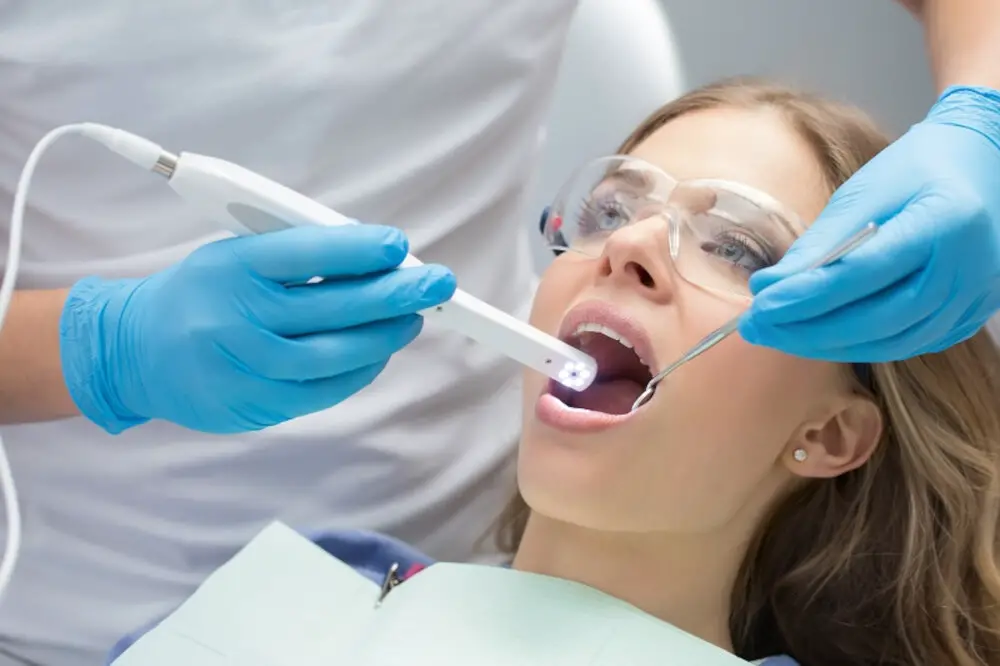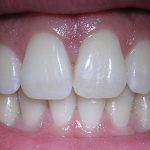When Can You Use a Straw After Wisdom Teeth Removal: A Comprehensive Guide

Wisdom teeth extraction is a common dental procedure that involves the removal of the third molars located at the back of the mouth. This procedure is typically performed under local anesthesia or sedation and can cause some discomfort and swelling during the recovery period. One of the most common questions patients have after wisdom teeth removal is when they can start using a straw again. While it may seem like a minor concern, using a straw too soon after surgery can lead to complications and delay the healing process. In this comprehensive guide, we will explore the factors that determine when you can safely use a straw after wisdom teeth removal and provide some tips to help you recover quickly and comfortably. It is important to understand that wisdom teeth removal is a surgical procedure that involves cutting through the gum tissue and removing the teeth from the jawbone. After the procedure, the body needs time to heal and recover, and any activity that disrupts this process can lead to complications. Using a straw too soon after surgery can create negative pressure in the mouth, which can dislodge the blood clot that forms over the extraction site. This can cause a painful condition called dry socket, which can delay the healing process and require additional treatment. Therefore, it is crucial to follow your dentist’s instructions carefully and avoid using a straw until it is safe to do so.
Wisdom teeth, also known as third molars, typically emerge between the ages of 17 and 25. However, many people experience issues with their wisdom teeth, such as impaction, infection, or overcrowding. In these cases, removal of the wisdom teeth may be necessary. Wisdom teeth removal is a common dental procedure that involves extracting one or more of the third molars. The procedure is typically performed under local anesthesia, and patients may experience some discomfort and swelling in the days following the procedure. Proper aftercare, including avoiding straws for the first few days, can help ensure a smooth recovery.
Following postoperative instructions is essential for a successful recovery after any surgical procedure, including wisdom teeth removal. These instructions are designed to ensure that the healing process is as smooth and pain-free as possible, and to minimize the risk of complications. Failure to follow these instructions can result in delayed healing, prolonged pain, and even infection. In the case of wisdom teeth removal, using a straw before the recommended time can dislodge the blood clot that forms in the socket, leading to dry socket, which is a painful condition that can delay healing. Therefore, it is important to follow the instructions given by your dentist or oral surgeon to ensure a speedy and comfortable recovery.
The purpose of this article titled \When Can You Use a Straw After Wisdom Teeth Removal: A Comprehensive Guide\ is to provide a detailed guide on when it is safe and appropriate to use a straw after wisdom teeth removal. The article aims to educate readers on the risks associated with using a straw too soon after the surgery, such as dislodging the blood clot or causing dry socket, and how to prevent these complications. The article also covers other post-operative care tips, such as what to eat and drink and how to clean the mouth, to ensure a speedy and comfortable recovery. Overall, this article serves as a helpful resource for anyone who has undergone wisdom teeth removal and wants to ensure a successful recovery.
What Happens After Wisdom Teeth Removal?

Wisdom teeth removal is a common surgical procedure that involves the extraction of the third molars, located at the back of the mouth. After the procedure, the patient will experience some discomfort and swelling, which can be controlled with pain medication and ice packs. The first few days after wisdom teeth removal are critical, and it is important to follow the post-operative instructions given by the dentist or oral surgeon. It is recommended to avoid any strenuous activity, smoking, or drinking through a straw, as these activities can delay the healing process and cause complications. During the healing process, it is important to maintain good oral hygiene by gently brushing the teeth and using a saltwater rinse to keep the mouth clean. The dentist or oral surgeon will schedule a follow-up appointment to monitor the healing progress and remove any stitches if necessary. Typically, the healing process takes around one to two weeks, and most patients can resume their normal activities after this time. However, it may take up to a month for the extraction site to completely heal, and the patient should avoid eating hard or crunchy foods during this time to prevent any damage to the healing area.
The healing process after wisdom teeth removal involves several stages, starting with the formation of a blood clot at the site of extraction. This clot acts as a protective layer, allowing the underlying tissue and bone to begin the process of regeneration. Over time, new tissue and bone will form, filling in the gap left by the removed tooth. During this process, patients may experience swelling, discomfort, and slight bleeding, which can be managed with pain medication and proper oral hygiene. It is essential to avoid using a straw or engaging in any activities that create negative pressure in the mouth, as this can dislodge the clot and delay the healing process. With proper care and attention, the healing process will be complete within a few weeks, and patients can resume their normal activities without any issues.
After a surgical procedure, it is common for patients to experience postoperative symptoms such as pain, swelling, bleeding, and difficulty eating or drinking. To manage pain and discomfort, patients can take prescribed pain medication and apply ice packs to the affected area. Swelling can also be reduced by applying ice packs and keeping the head elevated. Bleeding can be managed by biting down on gauze for the recommended amount of time and avoiding vigorous rinsing or spitting. Patients should also stick to soft, cool foods and avoid hot or spicy foods. It is important to follow postoperative instructions provided by the dentist or oral surgeon to ensure a smooth recovery.
Avoiding certain activities such as smoking and strenuous exercise is crucial after wisdom teeth removal. Smoking can delay the healing process and increase the risk of developing dry socket, a painful condition that occurs when the blood clot in the extraction site is dislodged. Strenuous exercise can also increase the risk of developing dry socket by raising blood pressure and heart rate, which can cause the blood clot to dislodge. It is important to follow your dentist’s instructions and avoid these activities for the recommended period to ensure a smooth and speedy recovery.
When Can You Use a Straw After Wisdom Teeth Removal?

After wisdom teeth removal, it is essential to take proper care of your mouth to promote healing and prevent complications. One of the most common questions asked by patients is when they can start using a straw after the surgery. It is generally recommended to avoid using a straw for at least 24 hours after the surgery to prevent dislodging the blood clot, which can lead to a painful condition known as dry socket. However, the specific time frame for using a straw may vary depending on the individual case and the dentist’s recommendations. In some cases, it may be safe to use a straw after 24 hours, while in others, it may take several days or even a week for the surgical site to heal adequately. It is essential to follow your dentist’s advice on when to start using a straw and to take it slow when reintroducing it to your routine. Using a straw too soon or too aggressively can disrupt the healing process and cause further complications.
Using a straw after wisdom teeth removal can be damaging to the healing process due to the negative pressure created in the mouth during suction. The suction can dislodge the blood clot that forms in the socket, which is essential for proper healing. Without the clot, the underlying bone and nerve can be exposed, leading to painful complications such as dry socket. Additionally, the act of sucking on a straw can cause strain on the jaw muscles, which may delay the healing process. Therefore, it is recommended to avoid using a straw for at least 24-48 hours after wisdom teeth removal to ensure proper healing and prevent any potential complications.
Suction is a commonly used technique in dental procedures, including wisdom teeth removal surgery. While it can be helpful in removing excess blood and saliva from the mouth, excessive suction can dislodge blood clots from the surgical site. Blood clots play an important role in the healing process as they protect the underlying bone and tissue from infection and promote tissue regeneration. Dislodging a blood clot can result in a condition known as dry socket, which can be quite painful and delay healing. Therefore, it is important to follow the post-operative instructions provided by your dentist or oral surgeon to avoid excessive suction and promote proper healing.
After wisdom teeth removal, the healing process is crucial and should not be rushed. The timeline for when it is safe to use a straw again varies from person to person, but generally, it is recommended to wait at least 24 hours before using a straw. During this time, it’s important to avoid any sucking or spitting actions that could cause dry sockets or disrupt the blood clot, which is essential for proper healing. After the first 24 hours, you can gradually reintroduce using a straw, starting with small sips and gradually increasing the amount over the next few days. However, it’s important to continue to be gentle and cautious with your mouth until your dentist or oral surgeon gives you the green light for normal activities.
Alternatives to Using a Straw

Using a straw after wisdom teeth removal is not recommended by dentists due to the negative impact it can have on the healing process. However, there are several alternatives to using a straw that can still allow you to enjoy your favorite drinks. One option is to use a spoon or fork to scoop the liquid into your mouth, which can be especially helpful for thicker drinks like smoothies or milkshakes. Another option is to sip the liquid directly from the cup, being careful to avoid putting pressure on the extraction site. If you are concerned about staining your teeth, you can also consider using a straw made from silicone or metal, which are less likely to cause damage to the tissues in your mouth. In addition to the alternatives mentioned above, there are several other ways to make drinking more comfortable after wisdom teeth removal. One option is to stick to cooler, softer foods and drinks that are less likely to irritate the extraction site. You can also try using an ice pack or cold compress on your cheeks to reduce swelling and numb any pain. Taking pain medication as prescribed by your dentist can also help to alleviate discomfort. By following these recommendations and avoiding the use of straws, you can ensure a faster and more comfortable recovery after wisdom teeth removal.
After wisdom teeth removal surgery, drinking liquids can be painful and difficult. While using a straw is a popular method, it is not always recommended as it can dislodge the blood clot and delay the healing process. There are alternative ways to drink liquids that may be more gentle on the mouth, such as sipping slowly or using a spoon to scoop up small amounts of liquid. Additionally, using a cup with a lid and straw may provide a gentle stream of liquid without the suction that a regular straw creates. It’s important to listen to your body and not force yourself to drink too quickly, as this can cause discomfort and potentially harm the healing process.
After wisdom teeth removal, it’s important to be cautious when consuming fluids to avoid dislodging the blood clot and causing dry socket. Using a straw can help prevent this, but it may cause discomfort due to the suction created. To make alternatives more comfortable, patients can try sipping from a cup or using a spoon to consume liquids. It’s also important to avoid very hot or very cold beverages as they can cause sensitivity and pain. Additionally, patients can try using a smaller straw or cutting the straw shorter to reduce the amount of suction required. Overall, it’s important to listen to your body and avoid anything that causes discomfort or pain during the healing process.
Following postoperative instructions is crucial after any surgical procedure, including wisdom teeth removal. These instructions are given to ensure a smooth and speedy recovery, as well as to minimize the risk of complications. Failing to follow these instructions can result in delayed healing, increased pain, swelling, infection, and even the need for further treatment. It is important to understand that even seemingly minor instructions, such as avoiding the use of a straw, can have a significant impact on the healing process. Patients should be diligent in following all postoperative instructions provided by their dentist or oral surgeon to ensure a successful recovery.
In conclusion, using a straw after wisdom teeth removal can be a tricky business. While it may seem like a convenient way to consume beverages, it can increase the risk of developing a dry socket, which can be extremely painful. It’s important to follow your dentist’s instructions carefully and avoid using a straw until you are fully healed. In the meantime, try sipping your drinks slowly or using a spoon to consume thicker liquids. Remember, the discomfort and inconvenience of avoiding straws for a few days is much better than dealing with the pain of a dry socket. So, be patient, take care of your mouth, and allow it to heal properly!
Conclusion

In conclusion, the use of a straw after wisdom teeth removal is a sensitive topic that requires careful consideration. While some dentists may suggest avoiding straws altogether, others may give the green light after a certain period. It is crucial to follow the aftercare instructions provided by the dentist to ensure a speedy and safe recovery. It is also important to keep in mind that every individual’s healing process is different, and what works for one person may not work for another. Ultimately, the decision to use a straw after wisdom teeth removal should be made in consultation with the dentist, taking into account the individual’s specific circumstances and needs. Proper post-operative care is essential to prevent complications and ensure a smooth recovery, so be sure to follow your dentist’s instructions carefully and ask questions if you are unsure about anything.







